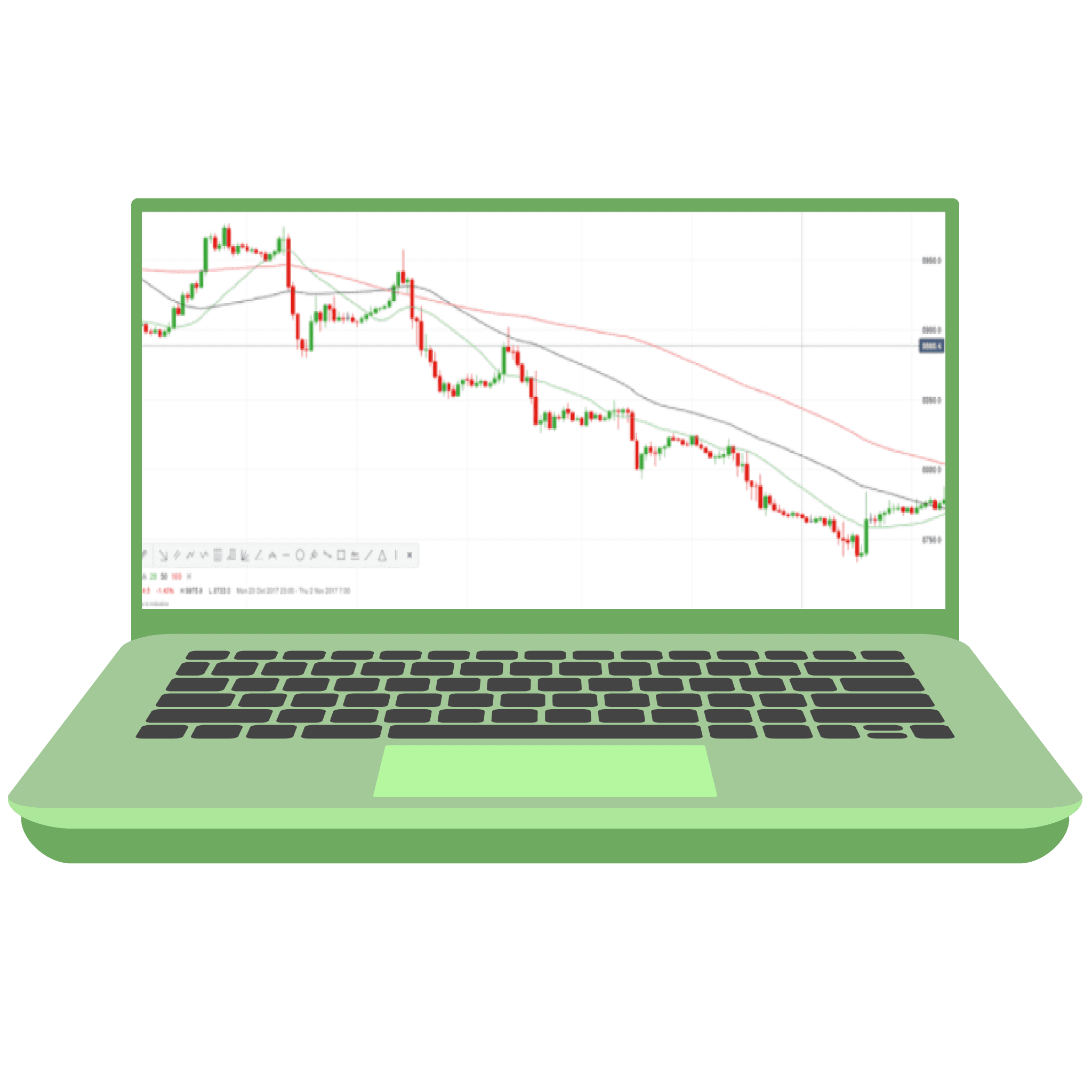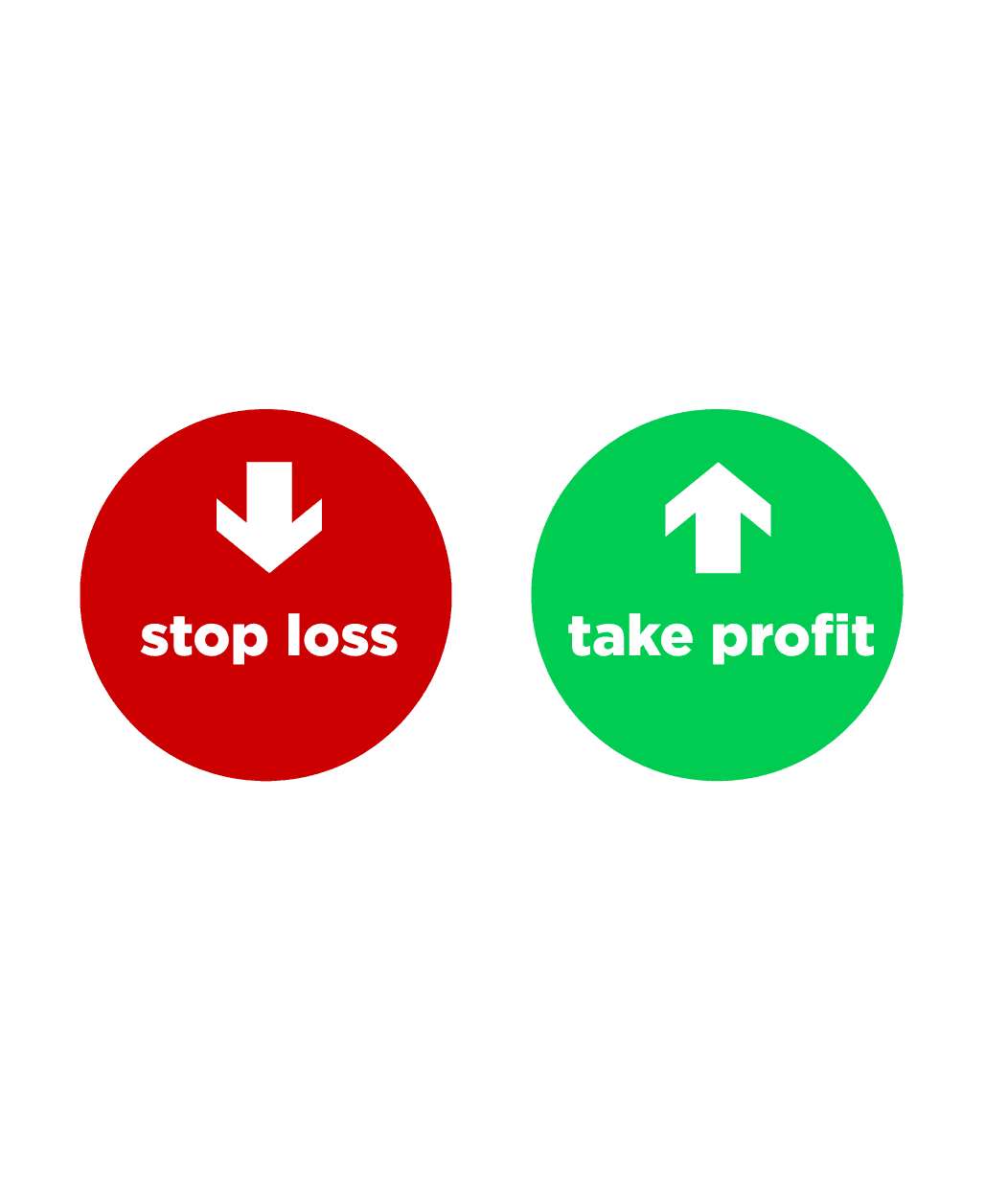Our partner, XM, lets you access a free demo account to apply your knowledge.
No hidden costs, no tricks.

Many traders lose sleep in fear of missing out on a large spike or losing more than they can afford. If you’re one of those traders, then put down your 5th cup of coffee and read carefully. In this guide, we will talk about stop-loss (SL) and take-profit (TP) orders, also known as "limit orders".
Believe it or not, even the top Forex traders use these tools, because they hold several trading positions. These tools provide a quicker look at the loss/gain status of each trade and help to control the risk on each trade.
Typically, these are tools that help traders to have more power over their orders in terms of risk.
These orders are determined after considerable market analysis and calculations. They are set according to the individual's expectations and can be different for every trader. These orders automatically close positions once the predetermined target is reached. They are designed to either lock in profits or limit losses.

The stop-loss and take-profit orders work like setting boundaries for your trade. They act as a type of limit so that you do not lose more than what you are expecting.
Basically, when you open a buy position in Forex, you start the trade at a certain entry price. The SL boundary will be below the entry price so that if the traded asset’s market price drops, it will not sink below the set boundary.
There are different ways of setting stop-loss orders, but this mechanism works in a way that limits your risk. If the minimum price limit is reached, the stop-loss call will automatically close the trade for you.
On the other hand, if you enter a sell position, the SL limit is set above the entry price. If the asset price increases, it will stop at the limit that you set, calling a stop-loss order and buying the asset from the market at the given market price.
Many traders use this kind of control over their trades, especially when they hold multiple positions in the market. Thus, they do not need to actively observe and analyze every single trade all the time.

Many traders use the take-profit orders in conjunction with stop-loss orders, where they set a two-sided limit on their trade, setting a loss minimum and a profit maximum.
So what does TP trading mean?
As opposed to a stop-loss, a take-profit order is set above the market entry price, so that if the asset price increases, it will reach the maximum profit limit, and automatically calls a selling order in order to take profit.
In addition to that, if a trader holds a sell position in the market, the TP limit is set below the entry price. If the price declines, it will reach the limit set by the trader, and a buy order will be automatically activated.
Take-profit limits trigger an automatic buy or sell order, which guarantees that a trader maximizes the profits of a specific trade. Thanks to this, there is no need for the trader to closely watch the market, or worry about manually closing a certain position in order to make a profit.
These two tools are definitely not used randomly. There is a considerable amount of calculations and technical analysis that should be taken into account before setting the boundaries.
Given the fact that Forex, as well as any other market, is linked with some risk, every trader aims to control that risk factor as much as possible.
It is important for traders to know when to enter a market, but it is also crucial to know when to exit the market.
Stop-loss and take-profit orders can be placed on any position in the market, whether creating a new order, creating a pending order, or adjusting an existing one.
In order to implement take-profit and stop-loss orders on trades properly, there are some strategies that traders follow. Among them are:

These are some famous strategies that are followed by most traders, however, if you are an experienced trader, you might come up with a strategy that fits best with your trading style.
Traders use this way to determine the amount they can lose as a percentage of the trading capital.
Using this strategy, you do not directly tell the broker what is the exact amount where you want to set your limit, and where you want to trigger the stop-loss order. Rather, you tell the broker the limit you wish to set based on a percentage gained or lost.
Some traders prefer this way of determining where the stop-loss and take-profit limits will be since it does not use a fixed price. Rather, it is relying on how much a trader can incur as a loss, and how much of a risk they are willing to take.
For example, if a trader is using $1000 to trade a specific currency pair, and if the trader specifies the percentage of the stop-loss to be at 10%, then the broker understands that the trader can lose up to $100, at which point a stop-loss order is automatically initiated.
The main difference between stop-loss and take-profit is that SL prevents your trade from losing more than you bargained for, while the TP level makes sure you take profit if a certain price is reached without having the risk that the price might turn around and you end up losing your profits.
This is the most commonly used method, which implies that a trader specifies a market price at which they would like to close the trade. This helps the traders close deals whenever the trade becomes too risky, or when there is a risk of losing the position.
A trader using this strategy is directly observing the market movement and using technical analysis and price fluctuations. They are trying to understand future price fluctuations in the market depending on historical data.
It is not difficult to know how to calculate reasonable stop-loss and take-profit levels. Let’s say a trader is trading the currency pair EUR/USD, which for example is 1.16 USD to 1 EUR. The trader looks at the chart and estimates that the price will increase as high as 1.18, but there is also a chance that it might drop to 1.12.
In this case, if the trader imagines that the market price might decline as low as 1.12 USD, they could set the SL order to 1.14 USD, meaning that the sell order will be triggered once the price drops to this level.
When the stop-loss call takes place at such a price, the trader is avoiding the risk of losing more money, if the price keeps on falling.
Despite that fact, there might be a possibility for the price to increase again, but until then the trader might end up losing so much money that it is better to just close out the position with a small loss.
While learning how stop-loss and take-profit orders work, it is very useful to understand how volatility stops work. Volatility can have a huge influence on your position, and it differs from asset to asset.
Every trader keeps an eye on volatility as a major factor in their decision to trade with a certain asset. Volatility is used to set up a stop-loss order, where the trader determines how much of a market price fluctuation they can survive.
Volatility is a double-edged sword. It takes a lot of analysis and estimations from the trader's side to predict the possible volatility in the market and what level is acceptable for them personally.
Once the trader decides on the level of price fluctuation they are okay with, then they will set a stop-loss and take-profit order, and the broker will close the deal whenever the determined volatility level is reached.
Using this method is very useful to decide what a good take-profit and stop-loss level would be since markets are very dynamic and can flip very quickly. It could be even faster than the decision-making time of a trader.
Therefore, a predetermined order at a set volatility level helps the trader to minimize the risk and close the trade when the market becomes very risky, or very volatile.

Similar to the stop-loss tool, the Forex take-profit tool requires a thorough analysis and understanding of what gains the trader is expecting.
This tool is a bit tricky since you are putting a limit on the potential gains you might have because the trade will automatically close once the market price reaches a certain level that triggers take-profit order.
To correctly set take-profit limits, there are several strategies to consider:
Explaining these two concepts will greatly assist you in understanding where to set your stop-loss and take-profit orders. Let’s explain what the support and the resistance levels are and how they work:
When the market price is falling, the support level is where the price changes direction and starts to rise. On the other hand, resistance is the level where the increasing market price stops rising and turns down.
A lot of trading platforms demonstrate the support and resistance limits on the charts, which are different for different assets.
A trader using the take-profit can use the resistance level, as an indicator of where they need to place the take-profit limit. Since the resistance is located above the entry price, a trader is recommended to put the take-profit limit a few pips just below the resistance level.
This way, the trader has a higher chance to maximize the gains since the position will close as the price rises, but just before it stops climbing and starts to dip. During this time, the take-profit order will call for an immediate sale of the asset.
If a Forex trader is holding a sell position in the market, the support level comes in handy. Since the support level will be below the entry price, the trader can place the take-profit limit a few pips just above the support level and make sure that they might make some profit before the price bounces back up.
This is another way to determine good stop-loss or take-profit points. This method relies on the volatility of the asset being traded.
The ATR indicator measures the volatility of a currency pair over a certain period of time. After this, it will show the expected movement of the price in terms of pips.
This number of pips represents the expected price fluctuations that a trader can anticipate for the asset. Traders can add the number of pips over the entry price, to get the level at which the take-profit order can be placed.
Note that this method uses historical data which is based on an average estimate, so a trader can not expect this level to be very accurate.
Some trading platforms make it easier to decide where to place SL and TP orders in Forex. The SL and TP points can be better calculated by using different types of chart patterns in combination with deep market analysis.
In fact, many trading platforms even offer traders technical indicators that can be used to determine the best stop-loss and take-profit levels. These points are based on technical analysis performed by sophisticated trading software.
Trading software that provides such recommended SL and TP points uses historical data of price movement and trend analysis to make its determination. Although this information might be useful to traders, it is not 100% accurate and should be used with caution.
There are some important factors that affect a trader’s decision when placing take-profit or stop-loss orders.
This is a tool that is used for technical analysis. Understanding this ratio helps you find out what is the best stop-loss and take-profit levels for you.
The risk/reward ratio is the ratio between the gains and the loss a trader aims for. For example, if you are trading with $100, and your risk ratio is 1:3, it means that you are willing to bear losses of $50 and hope for a profit of $150.
Using this ratio, traders can set their Forex stop-loss and take-profit orders. It helps them understand their needs and their expectations from the trade, as it shows the price limits where the trader can place the stop-loss and take-profit orders in order to reach their trading goals.
This is a kind of modification to the classic stop-loss method. It makes your stop-loss limit dynamic and moves it according to price movements.
This way, your loss limit moves upwards as the market price climbs. And if the market price moves enough, you can lock your loss limit at your entry price, to guarantee a break-even in a worst-case scenario.
Despite the fact that these two orders might seem perfect for traders, there are definitely some pros and cons behind each of them.

Our partner, XM, lets you access a free demo account to apply your knowledge.
No hidden costs, no tricks.
Traders who understand take-profit and stop-loss orders can control their trades without having to actively be watching the market. They provide the traders with limits on the profit and the loss they might incur, through orders that execute automatically.
Stop-loss and take-profit orders can be set directly in the trading platform, whether it is a new trade, a pending order, or an existing trading position, you can add stop-loss and take-profit orders at any time. Once the limits are set, they take immediate effect.
Yes, if the trader is using a trailing stop-loss order, and the market moves to a point where the prices go above the price at which the position was opened, it can pull the stop-loss limit into a level at which the trader can take profit if the stop-loss is executed.
These two concepts work together. A trader can set both of them to have two-sided control over their trade. A stop-loss helps to limit risk and closes out a position when it reaches a certain level of loss. On the other hand, a take-profit order closes a position when it reaches a pre-determined price at which the trader wants to exit the position with a set amount of profit.
Most traders set their stop-losses to between 15% and 20%. However, some traders might have different goals, and set different percentage levels based on their personal trading style and strategy.
(Entry price - stop-loss price) / (Pip value). The pip value is shown in the trading platform. For example, for the EUR/USD pair it is 0.0001 per pip, and using the equation above you will be able to calculate the stop-loss in terms of pips.